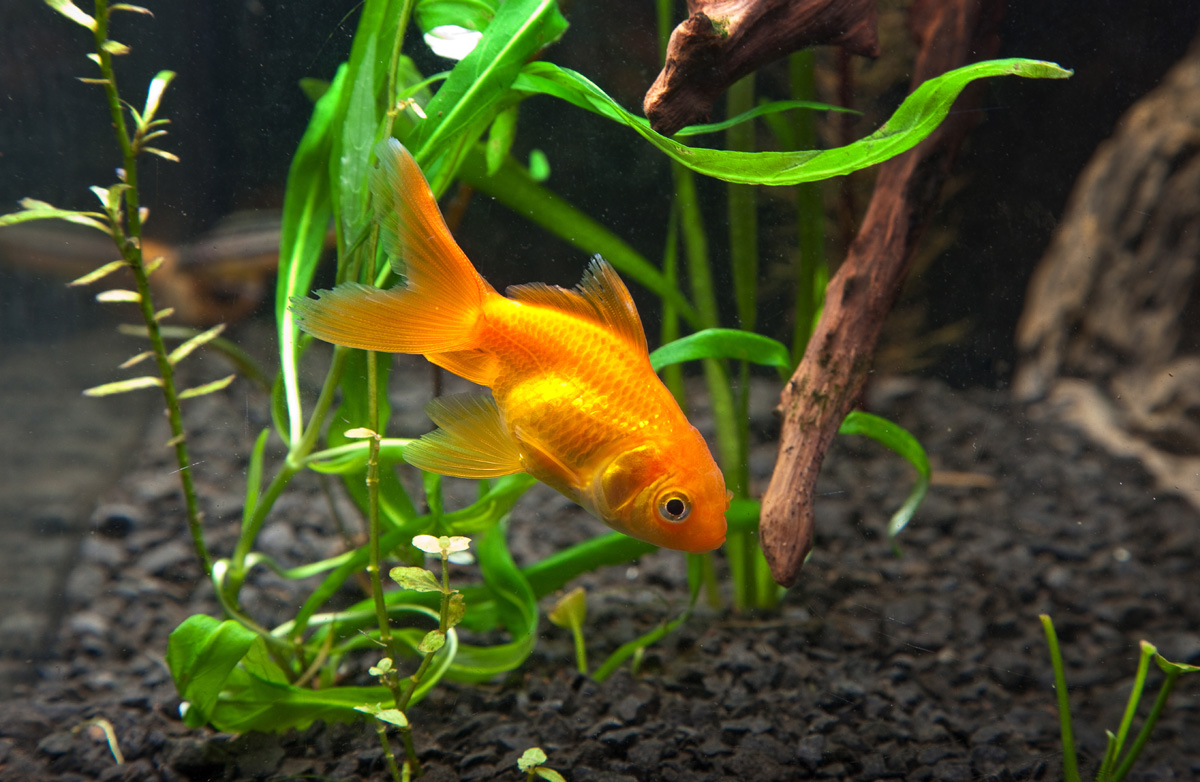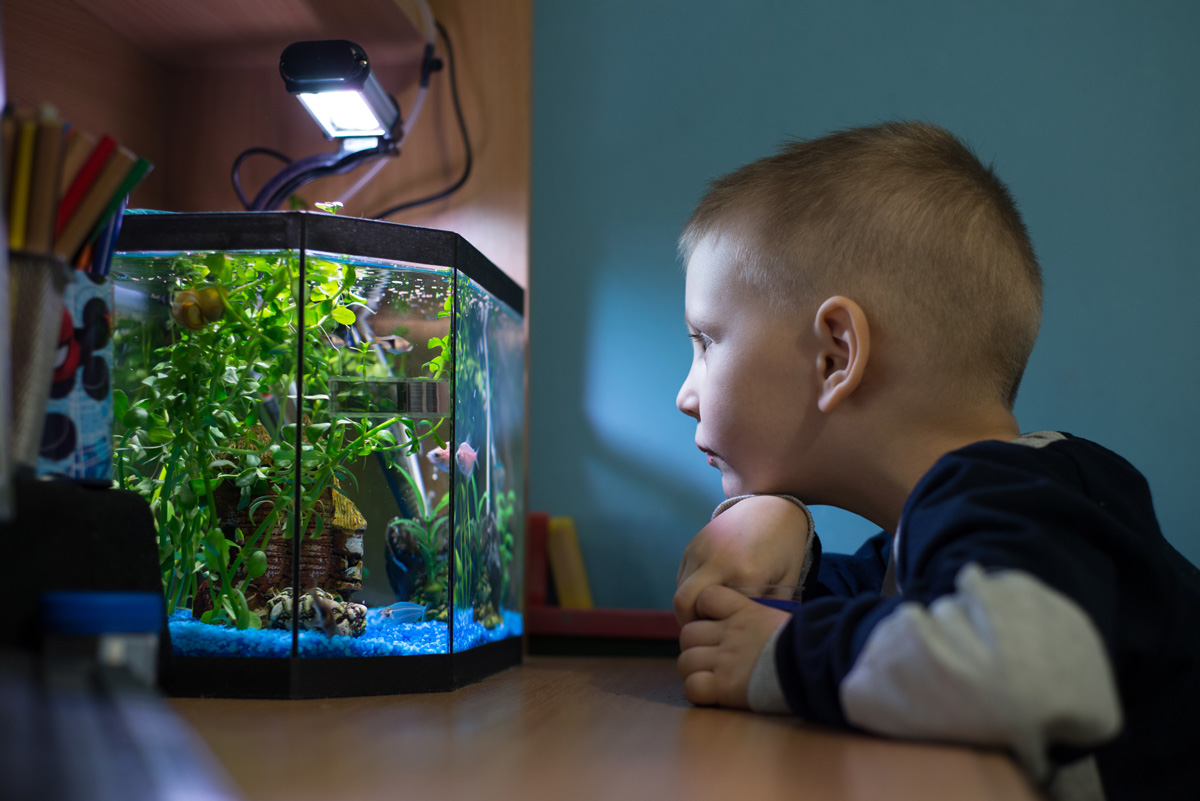Watching a community of fish peacefully swimming inside a colorful aquarium isn’t just interesting and fun, it’s also good for your health. A study published in the Environment and Behavior journal found that viewing aquariums led to noticeable reductions in blood pressure and heart rate. It also revealed that the more fish in the tank, the longer people watched, and the better their moods.
While aquarium hobbyists can choose from a huge variety of fish, the humble goldfish remains one of the most beloved. Many hobbyists start out keeping goldfish and eventually look to add other varieties of fish to the tank. Read on to learn about three fantastic fish that make great tank mates for goldfish.

What fish can live with goldfish?
Goldfish are typically not aggressive fish and rarely show signs of being territorial. That said, there are some specific things you need to consider when choosing the best aquarium buddies for your goldfish.
Temperament matters
Experts at aquarium co-op say that you should avoid choosing aggressive fish that will pick on your goldfish. For example, the addition of aggressive barbs, African cichlids, and other large cichlids will be stressful for your goldfish.
Choose fish compatible in size
Goldfish are omnivores and will eat fish that can easily fit in their mouths. This isn’t aggressive behavior, they just see the smaller fish as food. Any companions you choose for your goldfish must be compatible in size. Be sure to consider the size of your goldfish when fully grown before settling on a tank mate.
Take fin size into consideration
In an article on Tankarium, biologist and aquarist Jen Clifford says to steer clear of introducing species with large fins into a goldfish tank. Goldfish, she says, especially single-tails, can’t resist the temptation to nibble on long fins.
Think about your goldfish’s activity level
The best tank buddies for your goldfish are ones that have the same activity level. If your goldfish is a fast swimmer you’ll need to find a tank mate with similar speed to avoid problems. Fancy goldfish, for example, are slow swimmers, and pairing them with fast swimmers could subject your goldfish to bullying.
Consider temperature and diet needs
According to the aquarium co-op, goldfish mainly prefer cooler temperatures ranging from 50 to 70 degrees Fahrenheit. So, you’ll be looking for a tank mate whose ideal temperature needs to overlap with that of your goldfish. The species you choose should also share the same diet as your goldfish. According to co-op experts, if you add a fish that needs a meaty diet there’s a possibility your goldfish will get too much protein and become constipated.
What are the best tank mates for goldfish?
There’s a wide variety of fish that can live with goldfish. Following are three species that make wonderful goldfish tank mates.
1. Bristlenose pleco
Bristlenose plecos are a popular choice among novice fish owners because they are easy to keep and fun to watch. In the Tankarium article, Clifford highly recommends these peaceful mellow fish as perfect tank mates for goldfish. The aquarist has kept them with both fancy and hearty goldfish without issues. Clifford says that the bristlenose pleco’s armored body and spiny dorsal fins protect him from being nibbled by goldfish. While the bristlenose can swim quickly, they prefer to hang out on logs and the tank sides eating algae and food scraps helping to keep the tank clean.
Size: They can grow up to 5 inches
Temperature requirements: 60 to 80 degrees Fahrenheit
Minimum tank size: 20 gallons
Lifespan: About 5 years
2. Dojo loach
Also known as a weather loach, these are friendly fish who do well in a community of non-aggressive tank mates. They thrive in cold water temperatures making them a good option for a goldfish tank. The dojo loach is interesting to look at with his long slender eel-like body and tiny fins. These fish are usually brown or yellow with a marbled pattern of green or gray. They should be introduced in groups of three and are considered one of the best species for beginner hobbyists.
Size: Typically grow to about 6 inches
Temperature requirements: 68 to 76 degrees Fahrenheit
Minimum tank size: 40 gallons
Lifespan: 5 to 8 years
3. Rosy barb
These fish are red to pink in color and are a great choice if you’re looking to add more color to your aquarium. They are peaceful and non-aggressive making them great aquarium buddies for goldfish. The rosy barb is considered a hardy freshwater fish and is a good option for aquarists of all levels. They are schooling fish and need to live in groups of at least five so your tank must be large enough to accommodate these new additions.
Size: Can grow up to 6 inches
Temperature requirements: 64 to 79 Fahrenheit
Minimum tank size: 20 gallons
Lifespan: About 5 years

In conclusion
While it’s true that your goldfish can live alone, experts say that there are health benefits to providing your fish with tank mates. So, once you’ve established that your aquarium and filtration system can accommodate newcomers, it can be a rewarding experience for your goldfish. As with choosing any new pet, take your time and reach out to experts at your local aquarium club or your veterinarian with any questions. When you choose the right tank mates you can sit back and relax knowing that all is well in your aquarium.



